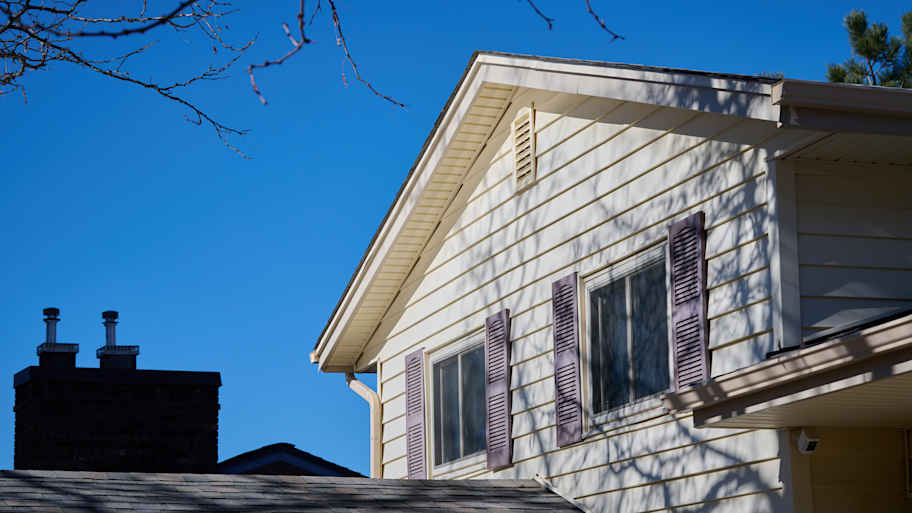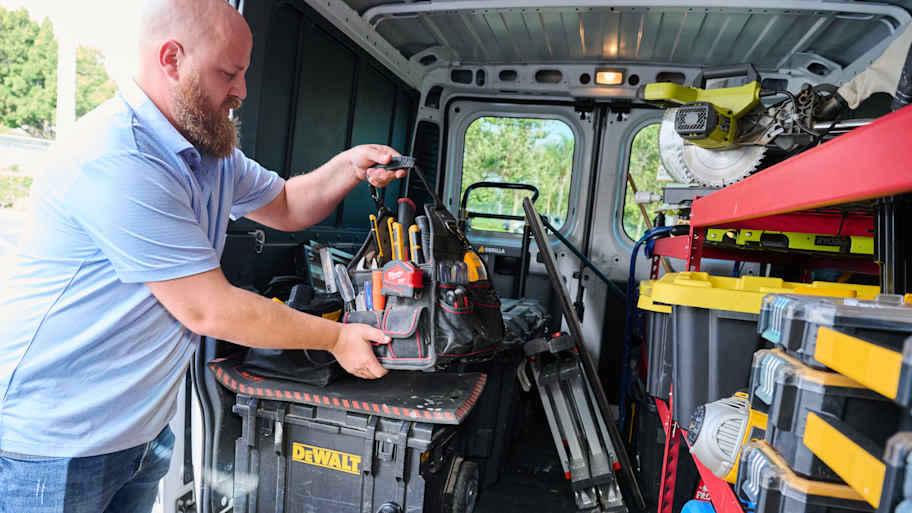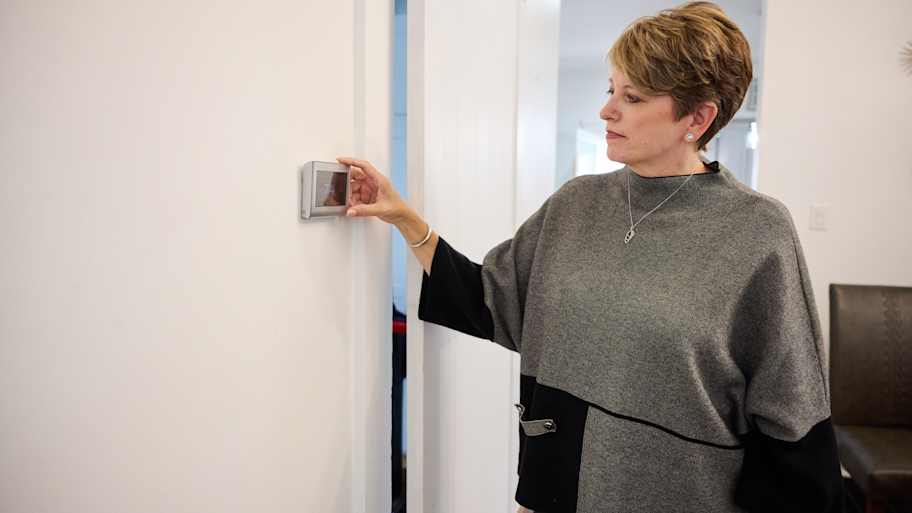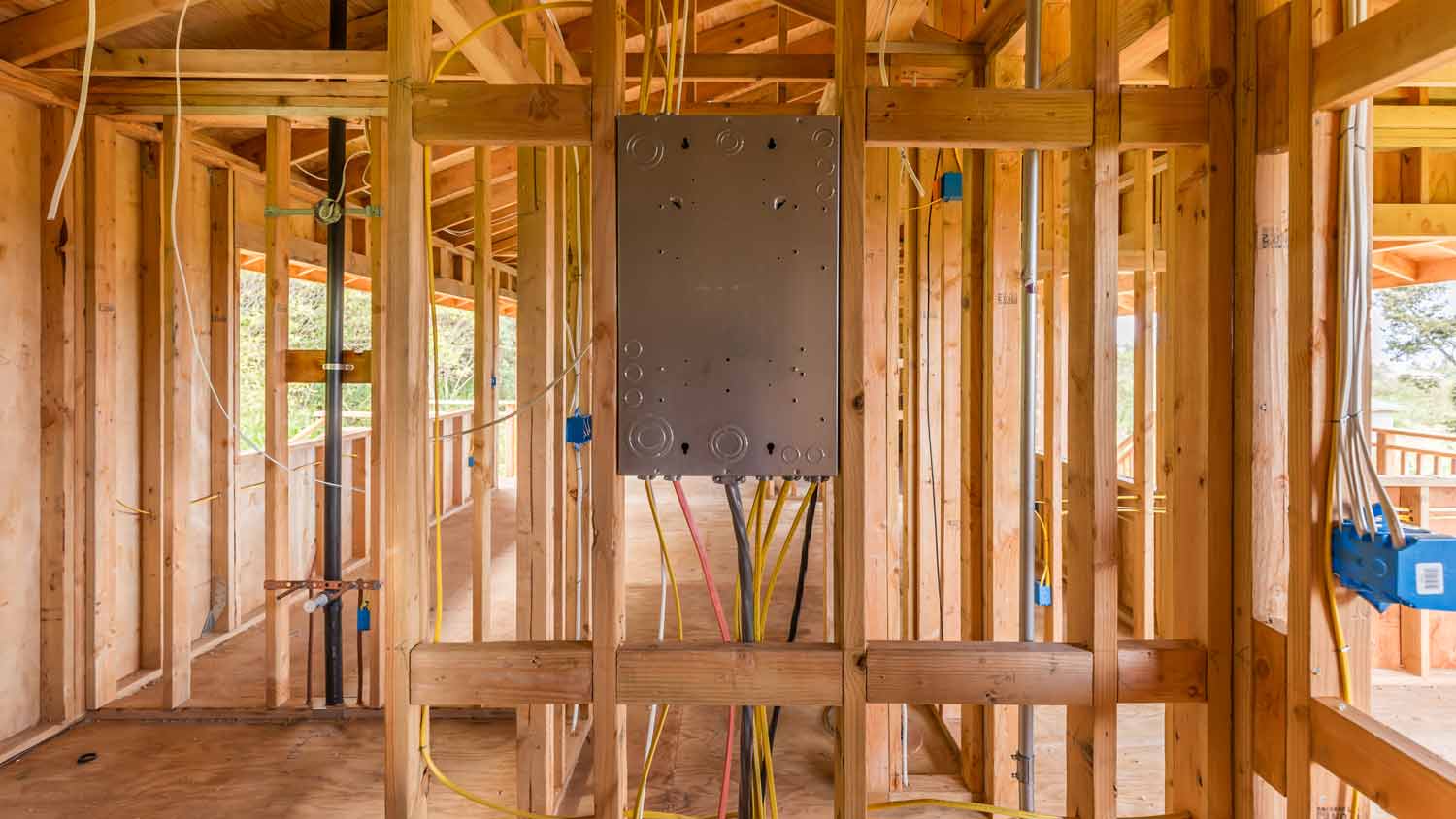How to Replace Knob-and-Tube Wiring in Your Home
Here’s what to know if you find knob-and-tube wiring in your home


- Voltmeter
- Wire snips
- Small bolt cutter (optional)
- Hammer
- Power drill
- Electrical panel (minimum 100 amps)
- Breakers
- Wire
- PVC conduit
- Outlets
While not common in houses built after 1950, those built before and shortly after may have knob-and-tube wiring. Knob-and-tube wiring, otherwise known as K&T wiring, doesn’t have a grounding wire, so it poses an increased chance of shocks and fires. If you’re concerned there is knob-and-tube wiring in your house, here are five things you’ll want to do to handle the situation.
Editor’s Note: Electrical work is highly dangerous and you should not attempt to do any electrical work unless you are a licensed electrician. We recommend that you hire a licensed, experienced electrician for any electrical work. This article is for informational purposes only and not intended to serve as a guide for DIY electrical work.
Turn Off the Breaker and Look For Damage Near the Wiring
 Photo: Douglas Sacha / Moment / Getty Images
Photo: Douglas Sacha / Moment / Getty ImagesIf you’ve spotted knob-and-tube wiring, which will look like black cables wrapped around white or gray knobs or posts and running through tubes of the same color, you’re likely in your basement, as this is where the most exposed wires lay. This typically means most of the home contains knob-and-tube wiring. While it’s visible, do not touch the wiring to inspect it.
Instead, you should shut off the breaker to these areas where the exposed wiring is and look from a safe distance for any noticeable damage. This damage would include cracks along the knobs and tubes of the wiring. Any exposed wiring is another sign of damage. The fabric insulation covering the wires may also be frayed or disintegrating.
Ensure There’s No Insulation Near the K&T Wiring
Beyond damage to actual wiring, you should also check that there is no insulation near the wiring. If there is insulation around the wiring, do not turn on the breaker in these areas until you call a local electrician.
K&T wiring surrounded by insulation is one of the biggest fire hazards to have in your home. Insulation causes the wiring to heat up too much, which can cause it to catch fire.
Unplug Most Items Connected to the K&T Wiring If Possible
Knob-and-tube wiring came to popularity when the highest electricity consumption in the household came from a radio. So the electrical panels for knob-and-tube wiring are typically 60 amps, whereas most electrical systems in today’s homes are at least 100 amps. That’s because the appliances and devices we use today consume much more electricity and require an electrical system capable of supporting these needs.
The outlets connected to this wiring can’t necessarily handle the electricity pull needed for items such as computers, appliances, heating and cooling, and large TVs. Small items such as a lamp, alarm clock, or vacuum cleaner might not have the same problem. This strain and potential for shorting and overheating makes replacing your knob-and-tube wiring an urgent matter.
If it’s not possible to unplug all of these items, try to spread out outlet usage and limit their usage to two electronics at a time. You may still want to use surge protectors, but apply the same principle of limiting it to two electronics at a time.
Remove Existing Wiring
Please note that doing electrical work yourself, including removing the existing wiring, is not advised unless you are a licensed electrician. Working on any electrical system without proper training can lead to damaging your home and even injury or death. The typical steps for removing the existing knob-and-tube wiring are as follows.
The electrician would use a voltage meter or voltmeter to check the lines and confirm that the power is indeed shut off. Never check wires by hand or by touching wires together. If the voltmeter does not stay lit or show indications of being electrified, then the line should be dead.
Next, an electrician would begin at the electrical panel and cut the wiring with wire or bolt cutters that are made for cutting this wire gauge. Coming to a porcelain knob, the electrician will cut on either side of it and continue on.
Once the wire is cut and removed, an electrician will remove the knobs with either a hammer, prybar, or screwdriver, depending on how the items are fastened to the wood framing, taking care to avoid shattering the porcelain.
When the electrician reaches a tube, they pull the wire through the tube. Depending on the electrician’s recommendations, they may remove the tubes or leave them in place.
Call an Electrician ASAP
 Photo: Dreet Production / Cavan / Getty Images
Photo: Dreet Production / Cavan / Getty ImagesBefore you take any steps on your own to directly test or work on your knob-and-tube wiring, it’s highly recommended to call in a nearby electrician for a professional inspection and guidance on possible next steps for rewiring your house. They’ll look into the severity of the problem and talk about the methods of changing the wiring to a modern standard.
Because this is a large and costly project, you may only want to replace K&T wiring in certain areas of the home at first. The major areas you should focus on include the bathroom, kitchen, and laundry rooms. These areas have high amounts of water running through them, increasing the potential for electrical shocks and fires.
Other areas like the living room and bedroom may be able to forgo the upgrade, so long as the electrician deems them safe. Protecting yourself and the people in your home as well as your investment in your home will be well worth the call to an electrician.
DIY vs. Hiring an Electrician
You should never, under any circumstances, handle knob-and-tube wiring on your own. Replacing knob-and-tube wiring is one project that can quickly lead to serious injury and fire if not handled correctly. Instead, hire a licensed electrician who can inspect the wiring and how it will hold up over the coming years.
How Much Does it Cost to Replace Knob-and-Tube Wiring?
The cost to replace wiring around the house can range depending on how big the home is and how much wiring they’ll need to switch out, but it typically ranges from $2 to $4 per square foot. Add about $5,000 for removal of the old wiring, and anywhere from $200 to $500 for permits.
Because of the safety risks associated with K&T wiring, it’s almost always worth it to pay an experienced electrician to upgrade your wiring, and you’re going to see a decently high ROI. Also, upgrading your wiring will likely save you headaches should you try to sell your home. Potential buyers may steer clear of the home because of the outdated wiring.
Full Rewiring
The cost to fully rewire your house will depend heavily on several factors:
Size of the house: plan on paying about $2 to $4 per square foot. For example, an older home that’s 3,000 square feet could cost up to $20,000 to rewire.
Accessibility to the wiring and what it requires to install the new wiring. If you need to open and repair walls, plan on paying about $4 to $8 per square foot.
New electrical panels cost about $900 to $2,000 for 100 amps, and about $1,500 to $2,500 for a 200-amp panel.
Number of receptacles and fixtures that need to be replaced and newly installed at about $100 to $185 each.
Partial Rewiring
The cost to partially rewire your knob-and-tube wiring will also depend on the extent of the project. You can estimate possible ranges using the costs listed above, but it will certainly only be a rough estimate.
Partial rewiring may involve using part of the old knob-and-tube wiring with the upgraded electrical system, but this is not ideal as the potential for hazards remains when new wires are attached to older ones with something like a pigtail wire connection.
A complete rewire is the recommended choice, if possible. If the situation requires only a partial rewiring, it may be better than leaving the old knob-and-tube wiring as it is. But always consult a qualified electrician and even get second opinions.
Adding GFCI Outlets
Because knob-and-tube wiring systems are not grounded, you will need to have an electrician ground the system and install Ground Fault Circuit Interrupter (GFCI) outlets. The National Electrical Code (NEC) requires GFCI outlets to be installed in certain areas in the home with water such as a kitchen, bathroom, laundry room, or even a garage with outlets within six feet of a water source to protect against electrical shocks.
GFCI outlets trip a breaker inside the outlet that turns the power off when it senses that someone is getting shocked or some other electrical problem is present. These outlets have two buttons between the upper and lower plugs. One is a “Test” button. When pushed, the Test button will trip the breaker and shut off power in the receptacle. You should test your GFCI outlets every few months to ensure that they are working properly.
The second button is the “Reset” button that will turn the power back on in the outlet when pushed. If the outlet has tripped for some reason other than testing it, be careful to correct the problem if you can do so safely; otherwise contact an electrician ASAP.
The cost to install GFCI outlets ranges from $130 to $300 per outlet, averaging about $210 per outlet.
Matt Marandola contributed to this piece.
Frequently Asked Questions
Yes, replacing knob-and-tube wiring is a good idea. K&T electrical systems typically handle 60 amps, which is not enough to support the electricity consumed by modern appliances and electronics in the average household. Modern electrical systems are 100 amps or more. Overloading knob-and-tube wiring can cause the wires to overheat and potentially cause fires. Not only is it worth replacing knob-and-tube wiring for safety reasons, it’s likely to help resale value.
Yes, any knob-and-tube wiring visible should be turned off and removed completely. K&T wiring that’s inaccessible inside walls and other areas can be left in place as long as it is turned off and disconnected. The remaining materials may make rewiring and upgrading the electrical system more difficult. You’ll want to compare the cost of complete removal to the cost of an electrician working around the old wiring.
Technically, as long as the knob-and-tube wiring is functional and deemed safe by a qualified inspector, it should be safe to buy a house with K&T wiring. The system must be at least 60 amps, but may still have trouble supporting modern household appliances and electronics. It’s also a good idea to have knob-and-tube wiring inspected by a licensed electrician every year or two to ensure that the system is working properly.



.jpg?impolicy=leadImage)

- Home Generator Repair
- Lamp Repair
- Electric Repair
- Generator Installation
- TV Antenna Services
- Emergency Electricians
- Commercial Electricians
- Attic Fan Installation
- Attic Fan Repair
- Exhaust Fan Installation
- Electric Inspectors
- Subcontractors
- Electrical Construction
- EV Charger Installer
- Chandelier Installation
- Doorbell Installation
- Bathroom Fan Installation
- Ring Installers
- Electrical Panel Upgrade















